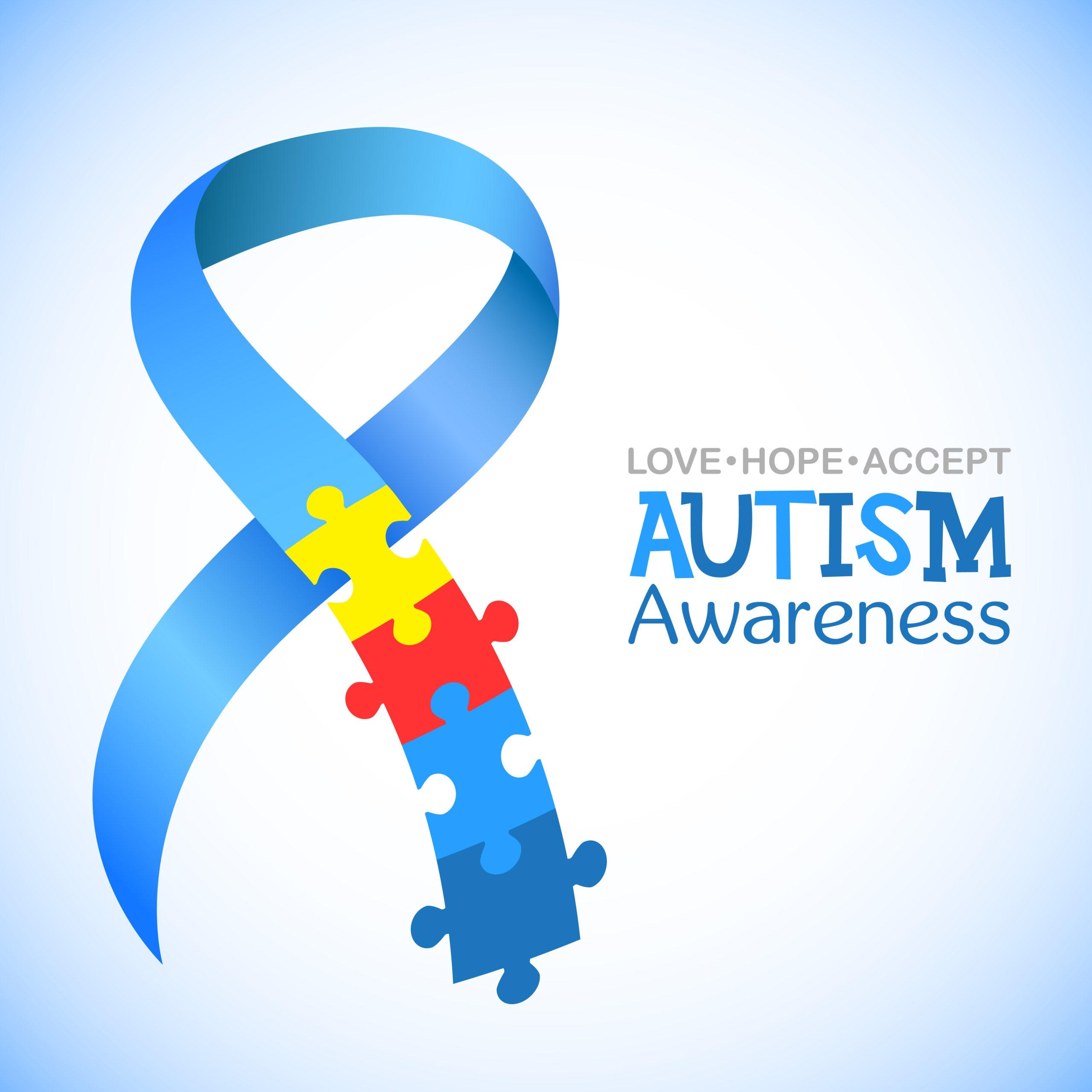
Since April is Autism Awareness month, I wanted to take a moment to share some information with you regarding vision disorders and autism.
Children with autism spectrum disorders (ASD) or other developmental disabilities often have a variety of undiagnosed vision problems contributing to their challenges.
The symptoms of these vision disorders are often mistakenly thought to be part of the spectrum disorder. When these vision problems are properly addressed and corrected, it often transforms a child’s behavior and greatly increases the child’s ability to learn and interact with others.
Dr. Temple Grandin states in her book, The Way I See it: A Personal Look at Autism & Asperger’s, “Visual processing problems are common in individuals with autism spectrum disorders. They can result in lack of eye contact, staring at objects, or using side vision…. Suspect a visual processing problem if you see an autistic child tilt his head and look out of the corner of his eye. … a child with poor vision processing may fear the escalator.”
Dr. Grandin further explains, “A regular eye exam will not find these problems. To correctly diagnose and treat visual processing problems, a Developmental Optometrist should be consulted… Due to the high variability within autism spectrum disorders, not all individuals will benefit from vision therapy. However, a child who can see his world clearly has a much better chance of benefiting from other therapies.”
Children with special needs definitely require a more in-depth vision evaluation than a routine eye exam. It is vital that all of the visual skills that are required for reading, learning and ADL are evaluated and that the child is given adequate time to respond to the testing. The developmental vision evaluation can run from 1.5 hours to 2 hours depending on the child. In addition, the emphasis of the evaluation is based on how the child relates to his or her environment. Sometimes lenses alone can open up a child’s world.
Below are Visual Symptoms Highly Associated with Autism*:
- Gaze aversion, Poor eye contact
- Turning head, looking out of corner of eye
- Being attracted to shiny surfaces or mirrors
- Prolonged fixating on light patterns, windows or blinds
- Hyperfixating on one object while ignoring other objects in the room
- Always prefers/avoids a particular color
- Shows distorted body postures or orientation including arching back, hyperextension of neck
- Touches all surfaces (walls, furniture, etc) when in an unfamiliar environment
- Anxiety or avoidance associated with fast moving objects or animals
- Spinning objects close to face or flicking fingers or hands near face
- Intense light sensitivity
- Poor attention to one’s surroundings as well as a lack of interest in one’s environment
- Preference for looking at objects (or parts of objects) rather than people
*Excerpted from: Understanding the Visual Symptoms of Individuals
with Autism Spectrum Disorder (ASD)
Rachel A Coulter, OD, FCOVD, FAAO published in Optometry & Visual Development







